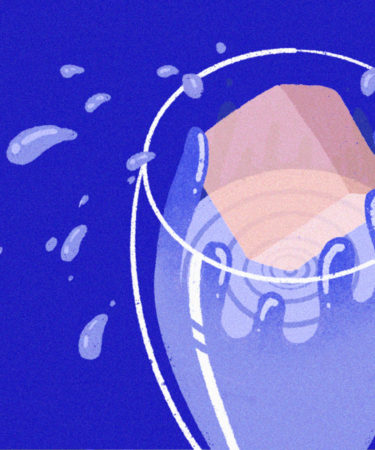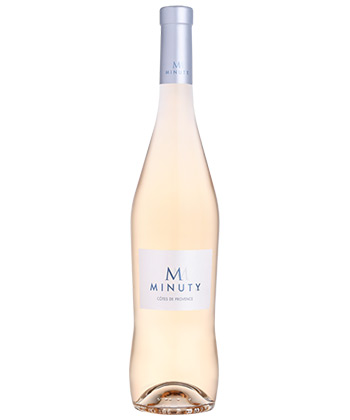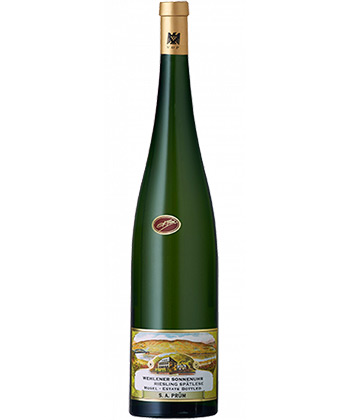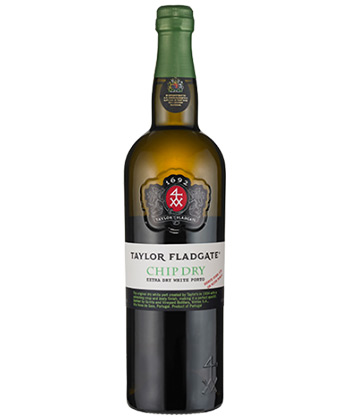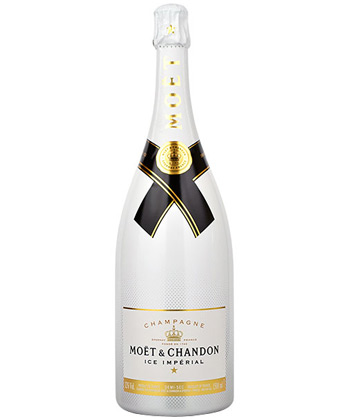We’ve probably all done it at some point in our lives. Maybe you didn’t have time to properly chill a bottle before dinner. Maybe your glass of wine warmed up since it first hit your lips and you want to re-chill. Maybe you just want your sip to be extra chilled. So, you add some ice to your glass — thus committing one of wine connoisseurship’s greatest alleged faux pas.
We have to ask: Is it really such a sin? Or is this outdated, misinterpreted advice from some wine-snob rule book that needs to be tossed out?
Turns out, adding ice to wine isn’t a sin, or only for the cheap stuff. Some of the world’s most elite producers are icing wines — from Provençal rosés to Champagne’s Moët & Chandon. Wine experts around the world weigh in on when it’s cool to chill your wine, and how to do it right.
What Ice Does to Wine
Adding ice does two things: It chills your wine, yes; but it can also (eventually) dilute it. “Adding ice to a glass of wine can make it more refreshing and may be a cooling choice on a hot day,” says Richard Vayda, director of wine studies at the Institute of Culinary Education. “However, keep in mind that this will dilute the colors, aromas, texture, and tastes, so I would not recommend ice in fine or complex wines that you would like to enjoy all the intensities, nuances, and flavors.”
Lea Carlo, wine and beverage manager at The Register in Nashville, Tenn., agrees: “Adding ice to wine affects the flavor and structure in the same way it affects a good cocktail,” she says. “The chill mutes the delicate flavors in the wine, and thins out the structure as the ice melts.”
Ideally, wine should be chilled before drinking it — a persistent issue among many U.S.-based wine drinkers.
“In the U.S., we tend to drink our white wines way too cold, and our red wines way too warm,” says Ellen Talbot, lead bartender at Fable Lounge in Nashville, Tenn. “The solution is to keep your wines tempered between 45 to 65 degrees Fahrenheit.”
Temperature control isn’t always accessible, however. “If this isn’t an option, one ice cube won’t ruin your glass,” Talbot says, “as a slight dilution is better than hot wine vapors ruining your olfactory system.”
When Adding Ice to Wine is Cool
Most experts agree that when it comes to what wines are the least offensive to add ice to, bright and crisp varieties that will retain some acidity when diluted are safe bets, like Riesling, Sauvignon Blanc, and, of course, rosé.
“We can all agree that there’s nothing worse than a warm glass of rosé,” says François Matton, owner and head winemaker of Château Minuty. Poolside pink wine tends to warm quickly outside in the summer sun, “so adding ice helps make the experience better — like with popular cocktails. This trend is becoming extremely popular across the French Riviera and Caribbean.”
Prime candidates for ice are the high-quality wines specifically made to be served over ice, which typically have a higher sugar content. “Both Veuve Clicquot and Moët & Chandon produce Champagnes meant to be served on ice; hence, we can join the French ‘à la piscine,’” says Vayda.
Then, there are the other prime candidates. “There are always those moments when one is stuck with a not-so-great wine — unbalanced, harsh, or cloying — a few cubes might just make it palatable,” says Vayda.
Iced Wine Aperitifs
Michael Mondavi, co-founder of Michael Mondavi Family Estate, uses his estate’s rosé to create an aperitif of sorts: He fills a large wine glass with ice and pours Isabel Mondavi Rosé until the glass is two-thirds full. “As the ice melts, it dilutes and makes a very refreshing aperitif. Once we sit for dinner, I toss the ice and my wine glass is now empty and cold for a glass of white wine or rosé,” he says.
Port wine, with its high alcohol concentration, is another good option to serve over ice — under certain conditions, says David Guimaraens, winemaker of Taylor Fladgate, Croft, and Fonseca. “It is not acceptable to put ice in vintage port. It is acceptable [however], and recommended, to put ice in port wines while having them as aperitifs … as [it] not only dilutes the 20 percent alcohol of a port wine, but also produces an elegant, stylish, and versatile drink to enjoy equally at home before an alfresco meal on a warm summer day, or on a cold winter evening in front of the fire.”
Meanwhile, Mondavi has fond memories of red wine over ice, thanks to his grandfather Cesare, who would say, “On a hot day, red wine with water and ice is the most refreshing and healthful drink.”
How to Add Ice to Wine Properly
Although Vayda recommends avoiding ice in the glass, if you’re going to add ice to wine, you can take some steps to minimize dilution (and thus impact on taste). “I would advise using hard — a.k.a. very cold — fresh ice right from the freezer, not warmer, ready-to-melt ice. This will give the wine more chill with less dilution,” Vayda says.
“Alternately, you may want to try a whiskey ‘ice cube’ made from stone, stainless steel, or plastic,” he says. “Right out of the freezer, they chill the wine quickly without weakening it, and you still get the ice cube tinkle. Frozen fruit can work nicely, too, [with] grapes being a natural choice.”
Michael Kennedy, Certified Sommelier and founder of Component Wine Company, offers another pro tip to cool down your wine with ice cubes, sans dilution: Take a couple ice cubes and put them into a clean, plastic Ziploc, squeeze the air out, then drop that into your wine for 20 seconds (or until it cools to your liking). Then, remove the bag.
Another last-minute chilling technique that avoids ice in the glass altogether is a salt bath: by placing the bottle in a saltwater ice bath (for around 10 minutes). Or, wrapping a wet hand towel around the bottle, and placing it in the freezer for about 10 to 15 minutes, says Amelie Derrieux-Sable, director of marketing at Champagne Henriot.
At the end of the day, “Warm wine is gross. If your wine isn’t cold enough, drop an ice cube in your glass, swirl it around for 20 seconds, grab a spoon, and scoop it out,” says Kennedy. “The wine will be cool, [and] much more enjoyable.”
5 Wines to Try (With Ice!):
Isabel Mondavi Rosé
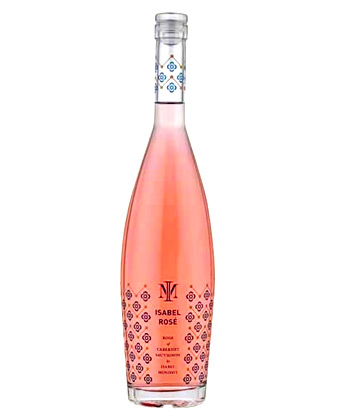
With a balanced acidity, this rosé has delicious strawberry and white floral notes with excellent minerality. Price: $20.
Chateau Minuty M Minuty
Crisp and round with a signature pale color, this light and bright rosé is perfect for warm weather and will stand up to ice. Price: $21.
S.A. Prüm Wehlener Sonnenuhr Riesling Spätlese Grosse Lage
Spätlese wines translate to “late harvest,” and as such tend to have a slightly sweeter profile than some other Rieslings. This one is no different, with notes of pink grapefruit and citrus, along with high acidity. (In other words, it’ll be great with ice and stand up to dilution.) Price: $35.
Taylor Fladgate Chip Dry
This white port is typically served chilled, so ice cubes are welcome. (You can also top it with tonic.) Price: $15.
Moët & Chandon Ice Impérial
The first Champagne made to be enjoyed over ice, this style is bright with notes of tropical fruit and raspberries. Price: $60.
